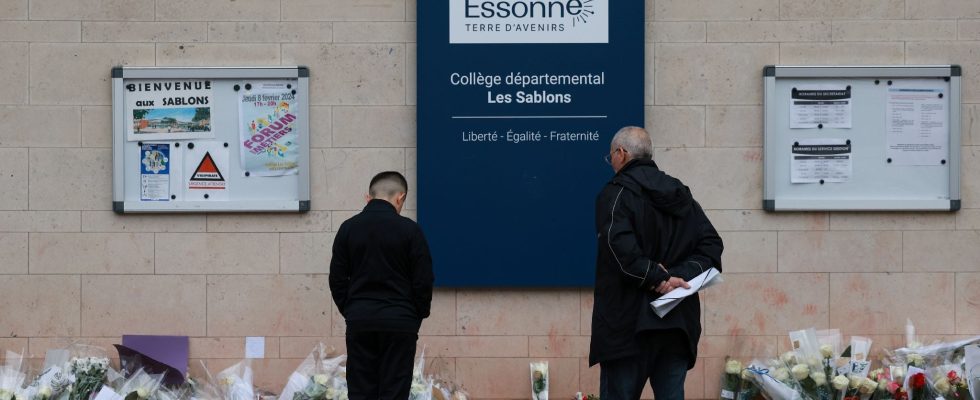Three incidents involving violence by young people in Viry-Châtillon, Montpellier and Tours have marked the news in recent days, in particular because one of them led to the death of a 15-year-old teenager. It is tempting to see something highly significant in the conjunction of these three worrying facts. This could be the case but, to find out, it would be necessary to take a much longer scale of observation to establish, for example, whether the existence of an acceleration in the phenomena of violence between young people is real, as some decree it a priori, or if it is, in this case, a statistical concentration of events such as chance often produces.
This time to step back is a luxury that the society of permanent commentary no longer allows. What we can agree with the analysis is that incidents of extreme violence in a school setting are often multifactorial. In several recent cases, the religious variable and the moral policing that it inspires in certain adolescents appear to be involved. Another variable also makes its weight felt: the digital conditions of the expression of this violence. It is not social networks that invented harassment, but they not only condemn victims to being permanent involuntary witnesses, but also offer bullies of all kinds new possibilities for coalition. They also authorize, in the secrecy of private groups, forms of radicalization where everyone is always more indignant than the others at the behavior of the victim in a deadly contest of virtue.
This digital wildness is documented by numerous studies which highlight, including at European level, that most social network users have witnessed or been victims of online hate phenomena. The so-called virtual exchanges, forgetting that there are flesh and blood beings involved, encourage what psychology professor John Suler calls “digital disinhibition”. In the same way that the flow of credulity does not remain confined to the world of screens, the violence that is heard there sometimes dramatically spills over from smartphones.
These are also the two major risks that we frequently point out about these digital tools: fake news and violence. Is there a connection between the two? This is precisely the question posed by an article published in March in the prestigious journal of the American Academy of Sciences by summoning an impressive empirical material of 8,687,758 messages from 6,832 users of Twitter (henceforth called a collection of 14,617 true and false headlines from professional fact-checking websites. The aim was to examine the possibly significant relationships between the activity of individuals sharing false information and the use of language that the authors of the paper call “harmful”. This approach is quite unique because there is a lot of work concerned with one or the other but few or none have sought to consider their relationship.
Their analyzes lead to the idea of a significant and strong link between these two scourges of the digital worlds. On average, Twitter messages containing links to questionable information sites also contain hate speech. These gullible users, more often than others, use flowery and offensive vocabulary, including in their messages not related to current events. It remains to establish a causal model that would shed light on the nature of these links. Several hypotheses are possible, such as the fact that the hostility of language and adherence to fake news are both rooted in a feeling of frustration, noted elsewhere in the literature, or even that toxic people are particularly attracted by world of false information… Anyone who has tried to engage in a contradictory debate with gullible people of all stripes knows that insults and threats are never far away. And here, as in some colleges unfortunately, violence sometimes crosses the threshold into the virtual.
.
